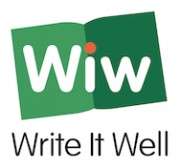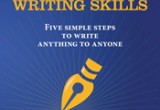
Trainings on communication skills are a shrewd investment to help employees advance a company's goals and improve its bottom line. Write It Well offers four guides to help corporate trainers lead dynamic workshops to improve writing skills.
Oakland, CA, December 2, 2014 (Newswire.com) - The consulting and training firm Write It Well offers four guide books for a corporate trainer to improve employees’ written communication skills—however confident the trainer is as a business writer. Train-the-trainer guides are available for these four titles:
- E-Mail: A Write It Well Guide. Show participants how they can use their work email to save time and improve results.
- Essential Grammar. Teach grammar, punctuation, and usage guidelines to help participants avoid distractions, focus a message, and project a professional image.
- Professional Writing Skills. Help participants plan and draft any business document in clear, concise language.
- Writing Performance Reviews. Help a group of managers write performance reviews quickly, clearly describe what employees need to improve, and clearly describe what strengths employees can continue to build on.
Natasha Terk is the author of the four books and has been Write It Well’s managing director since 2004. The firm’s instructional designers and trainers have 35 years of experience in helping clients streamline their work and deliver effective messages. These and other titles in The Write It Well Series on Business Writing reflect that expertise.
With the increased pace of business, writing effective performance evaluations is becoming a lost art. This book reminds people how to write an evaluation that will stay useful to you as a manager and be a welcome development tool for your employees.
Craig Pampeyan, Director, Business Operations, Hewlett-Packard
Corporate trainers can use these four books in workshops, for small-group study, or in individual coaching programs. Although it’s helpful for a trainer to have experience with business writing, that experience isn’t essential to succeed with these programs.
PowerPoint slides accompany each of the four training guides. Along with the four print books, the companion slides and guide books provide all the content and activities a trainer needs to conduct a successful learning program. Clear scripts show when the trainer should speak and when participants should read aloud from the print book.
The trainer guides are organized into three major units:
- Introductory guidelines to help prepare for training
- Step-by-step lesson modules
- Appendices containing sample letters, checklists, and FAQs
The guides share a variety of useful techniques with trainers:
- To engage participants in the learning process
- To articulate clear, relevant behavioral objectives
- To build on what a unique group of participants already know
- To use job-relevant writing illustrations so participants can immediately apply workshop techniques to the writing they do for work
The guides encourage questions and discussion, and they also explain what a workshop doesn’t cover. The guides include tips on budgeting time and adapting agendas to a variety of factors:
- Participants who know more or less about the training topic
- Stakeholders who want to tailor training exercises to include specific writing samples and accomplish departmental goals
- Opportunities for prework and individual coaching
- Longer or shorter training time frames
- Various training settings:
- Workshops and other classroom trainings
- Small-group trainings and study groups
- Individual coaching programs or tutorials
- Webinars
Each guide helps the trainer match the participants’ internal and external writing with the messages a corporation needs to deliver. Corporate trainers can rely on all four guides to help employees save time, improve results, and boost the company’s bottom line.
Share:








